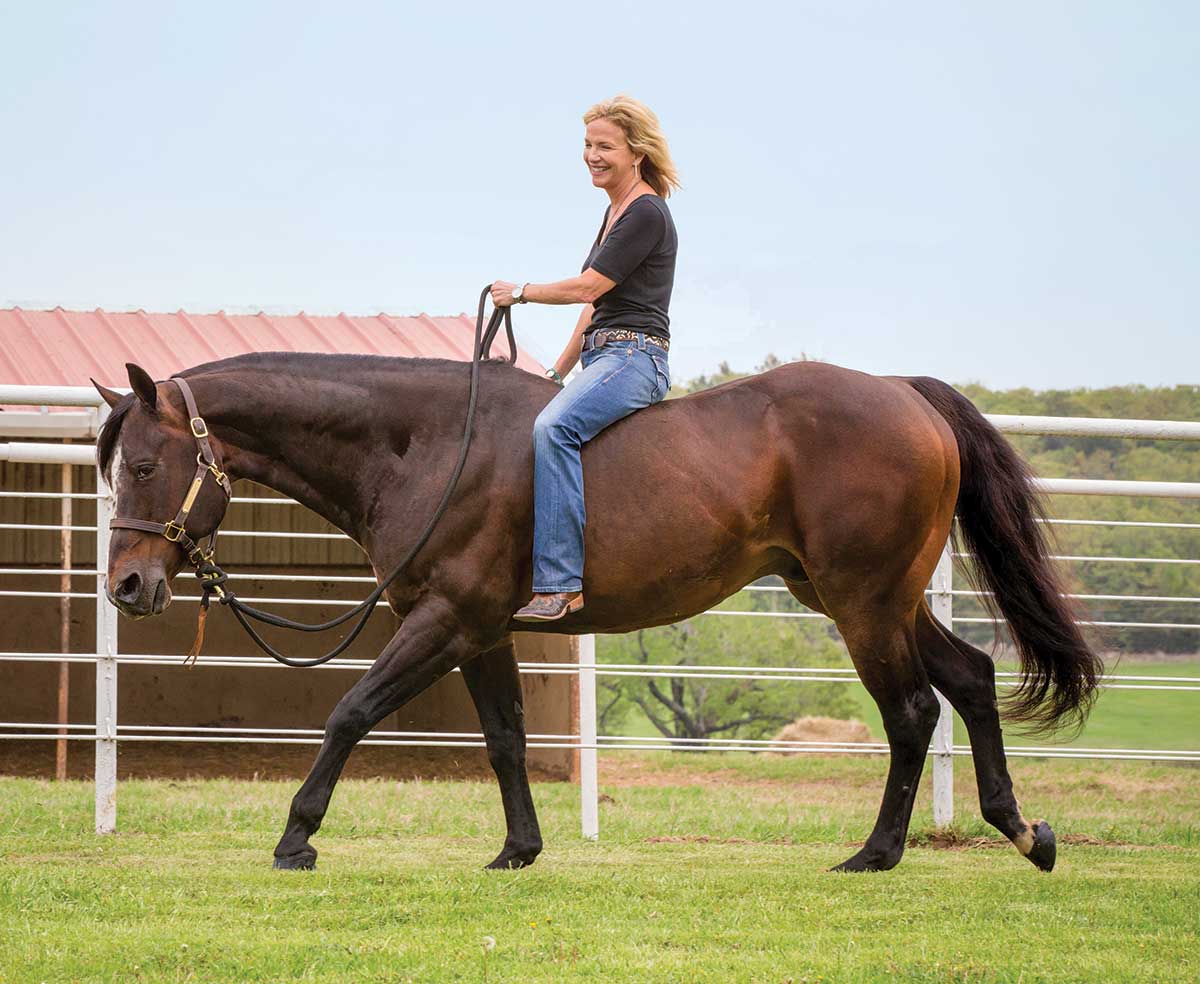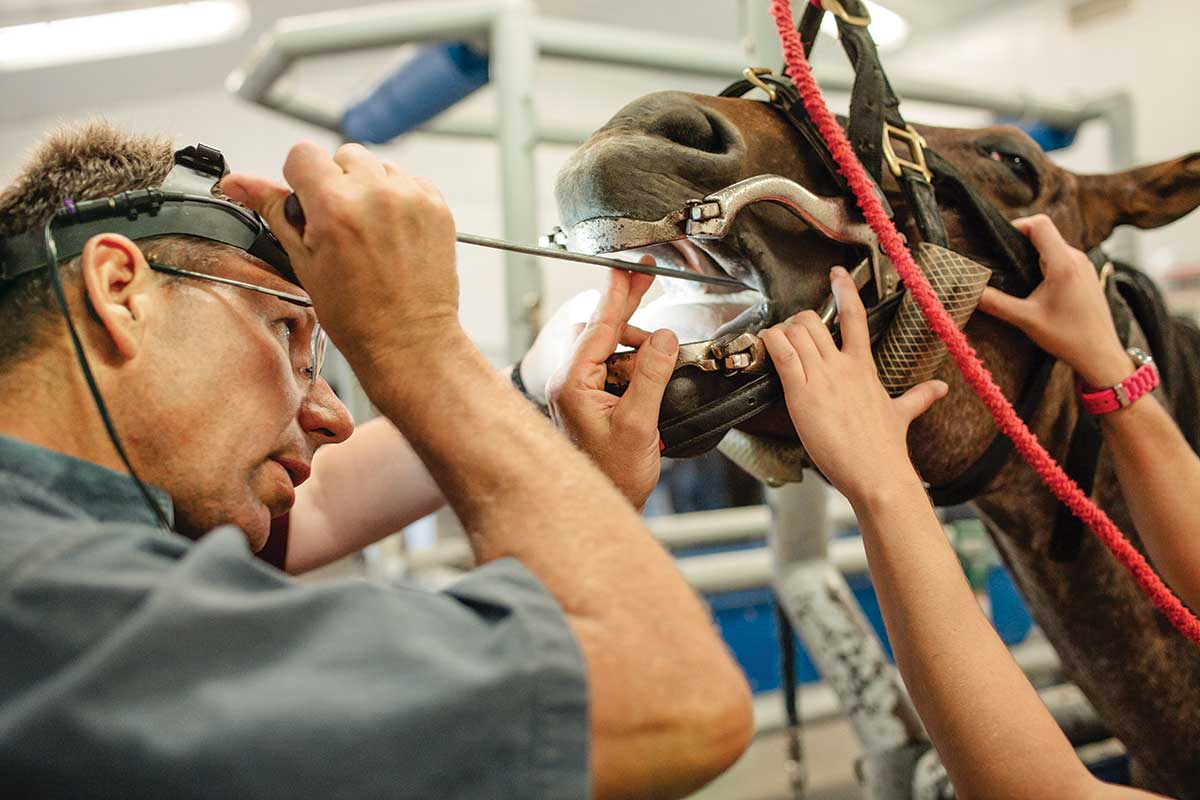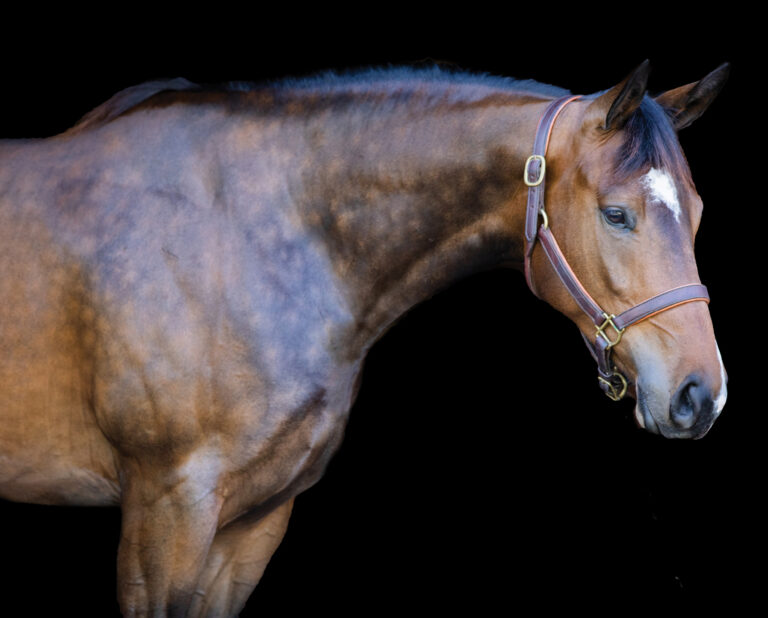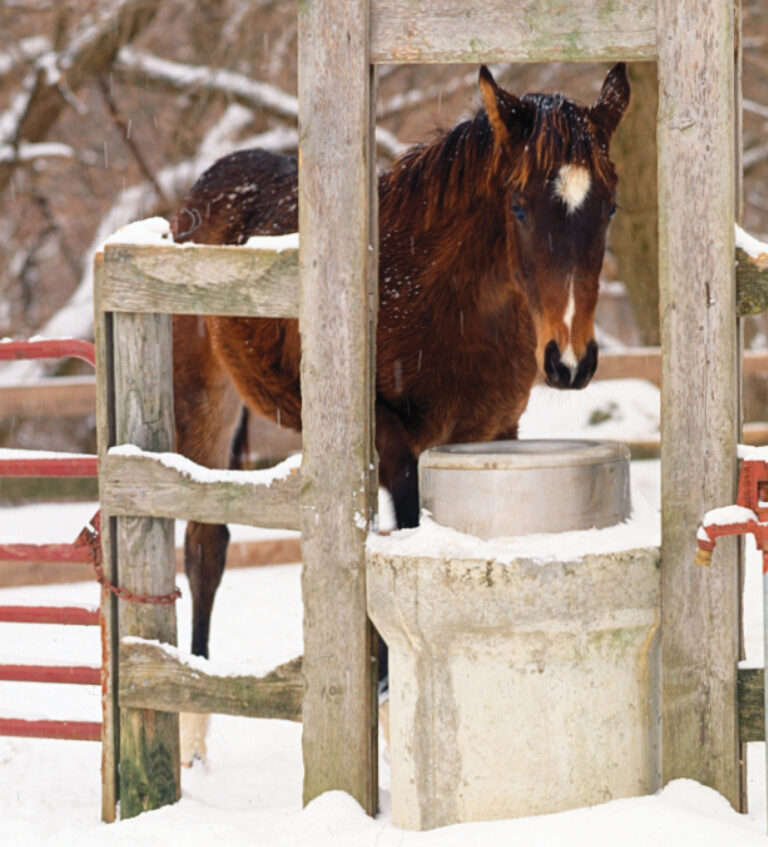
“Trigger’s 32 this year! Doesn’t he look great?” my client proclaims. “He does seem to be slowing down just a little bit though—especially on long trail rides. Sometimes he even seems a little sore. What can I do to keep him going?”
Read More: Watching My Senior Horse Age is Breaking My Heart
“Wow,” I think. “Age 32 and slowing down? I remember when we thought 20 was old. Now my clients want to know how to keep a 30-year-old horse moving down the trail.”
With advances in equine medical care, your horse has a much better chance of leading a happy and productive life well into his third (or even fourth) decade than his predecessors did 20 years ago. That’s right: 30 really is the new 20.
In this article, I’ll tell you about five major factors that have revolutionized your horse’s potential to live a healthy and productive life as a super-senior. Along the way, I’ll identify signs he might need help. Finally, I’ll give you the tools to determine when enough is enough when it comes to your efforts to keep him going.
Five Longevity Boosters
Why are horses living longer, healthier lives than ever before? The following five factors have each clearly played a role.
Read More: Senior Horse Care
Nutrition
Then: Decades ago, your horse’s daily ration consisted of hay and grain, with a multivitamin thrown in for good measure. Hay was chosen based on availability and outward appearance. If it was green and clean, it was probably good enough. Grain typically consisted of oats, corn, and barley—either plain or mixed with molasses in a sweet feed or a livestock blend. As horses aged and chewing became difficult, the best available options might’ve included beet pulp, a bran mash, or soaked alfalfa pellets.
Now: “Grain” has been replaced by “concentrates,” or combination feeds carefully designed by equine nutritionists to meet your horse’s specific needs, especially for seniors.
Read More: What To Feed Older Horses
Is he approaching 20? Choose one of many easily chewable, high-protein senior feeds balanced with vitamins and minerals to meet his increasing demands. Has he been diagnosed with equine metabolic syndrome or “insulin resistance”? You can find a low-carbohydrate concentrate that might help him. Add to that the wide variety of supplements available to help with any health condition—from arthritis to airway disease—and it’s no wonder your horse’s condition is better than ever.
Of course, good-quality hay and pasture remain the most important parts of any horse’s diet, and you can run a hay analysis to determine which forage provides the best nutrition for your horse. Science has even helped hay growers produce different types of hay to meet different nutritional demands.
What to watch for: How can you tell if your horse needs a diet adjustment as he grows older? First and foremost, keep an eye on his condition. If he’s losing weight, he may need a higher-calorie concentrate. If you notice a lack of muscling along his topline, it might be time to increase the protein in his diet. Does he have trouble chewing? Look for an easy-to-chew senior diet designed to meet all of his needs, even if he can’t eat hay. Finally, if your vet diagnoses a medical condition such as pituitary pars intermediary dysfunction (PPID, also called Cushing’s disease) or kidney failure, a specially designed diet can help improve your horse’s health.
Read More: Let Your Senior Performance Horse Shine

Dentistry
Then: Thirty years ago, your horse had his teeth floated with a handheld file, usually for the first time when his age was well into the double digits. Your vet or dentist filed down the sharp edges that formed along the outside of his upper molars and inside of his lower molars every year or two. Rotten teeth could be extracted, but this was often a complicated procedure that required general anesthesia. Not many other dental treatments were available.
Now: Perhaps nothing in equine veterinary care has changed more than dentistry. These days, your horse’s dental care begins when he’s just a baby. Most dental practitioners recommend a first dental exam at 1 or 2 years of age to check for baby teeth your horse might not be losing normally. By identifying and treating these problems early, your vet can prevent problems from developing as your horse matures.
A dental exam and balancing is typically recommended every year. Your practitioner inserts a speculum to hold your horse’s mouth open and ensure that every tooth can be examined and treated. Power tools expedite adjustments and can correct major problems arising from missing teeth or other misalignments. As your horse grows older, your vet can recognize and treat periodontal disease or even perform a root canal to save a damaged tooth. And better tools mean most rotten or damaged teeth can be removed with your horse standing up, eliminating the need for general anesthesia. What to watch for: A yearly dental exam allows your vet to recognize and treat any dental abnormalities before they cause a serious problem. If you notice your horse has a difficult time chewing, he’s “quidding” (spitting out balls of feed), or you detect a foul odor coming from his mouth between exams, it’s time to make a call. Thanks to senior diets, even older horses with no teeth can thrive for many years. There’s no doubt about it: Improved dental care has a major impact on your horse’s longevity.
Read More: Equine Retirement
Parasite Control
Then: Decades ago, your veterinarian visited your farm once or twice each year to administer a toxic substance directly into your horse’s stomach through a nasogastric tube. Very few deworming medications were available, and although they were effective against the parasites, they were also hard on your horse.
Over time, medications were developed that could be administered orally, first as a pellet added to your horse’s feed, and later in a paste formulation that helped ensure your horse got a full dose with every treatment. Deworming programs involved giving these medications every other month, targeting primarily the large strongyle, a parasite that causes severe damage with devastating health consequences.
Now: The good news is that the large strongyle has largely been eliminated as a health threat, leaving other, less-damaging parasites such as the small strongyle as the focus of deworming programs. The bad news is that these remaining parasites have developed resistance to deworming medications.
Modern deworming programs are strategically designed to control parasite populations while protecting the effectiveness of available dewormers. Well-designed programs involve regular monitoring of your horse’s parasite load through fecal egg counts and only call for deworming twice per year unless your horse has poor natural immunity and harbors a high parasite load. Control programs have also begun to recognize and target equine tapeworms that can cause serious colic episodes.
Finally, better husbandry—such as pasture cleaning, pasture rotation, and age-group segregation—helps minimize parasitic impact and encourages a healthier environment for your horse overall.
What to watch for: If you follow recommendations for strategic parasite control, you can avoid the consequences of parasite problems altogether. High fecal egg counts will immediately identify problems with resistance to dewormers and shortcomings in your horsekeeping practices. Even if you’re doing everything right, parasites can be a problem. If your horse loses weight, experiences chronic diarrhea, has colic episodes, or simply seems unthrifty, it might mean it’s time to discuss the possibility of parasite problems with your veterinarian. Additional fecal egg-count testing might be recommended.
Read More: Aging Horse’s Back
Diagnosing and Treating PPID (Cushing’s Disease)
Then: Diagnosed in humans for over a century, the disease then known as Cushing’s wasn’t recognized in horses until the 1960s. For many years, a diagnosis depended on recognizing clinical signs such as a long hair coat and loss of muscle tone. If Cushing’s was suspected, your vet might’ve recommended routine blood work to detect an increased glucose level. No specific treatment was available; Cushing’s management included body clipping, vigilant hoof care to reduce risk of laminitis, and careful monitoring for skin infections that can accompany the disease.
How Much Is Too Much?
While most of the time it’s a good thing that our horses are staying healthy into their golden years, there are times when I find myself wondering about our expectations for our aging partners. Is it fair to expect a 30-year-old horse that’s stiff and sore to tackle mountainous terrain on a rigorous trail ride? Or for a horse in his mid-20s to hit the road traveling on a busy show circuit? Sometimes yes; sometimes no. Deciding when it’s time to call it quits is one of the hardest decisions horse owners face.
Think of it this way. When you’re riding your 30-year-old horse, it’s a lot like taking your 90-year-old grandmother on a hike. And while some in their 90s might relish the idea, most would probably prefer a somewhat less-demanding activity. If your 32-year-old horse seems to be “slowing down,” give him a break! Instead of asking what you can do to keep him going, consider what he might like to do instead.
Now: Now more specifically named, PPID can be diagnosed with a blood test, and medications are available to help control symptoms. Most commonly, your vet will perform a test that measures ACTH, a hormone that’s elevated in horses with PPID, to make the diagnosis. Other tests are available, including a stimulation test that’s even more sensitive and can specifically diagnose PPID earlier in horses showing symptoms. Although the disease can’t be cured, early diagnosis and specific treatment helps control symptoms, which might help your horse live a longer, healthier life.
What to watch for: Estimates say that 20 percent of horses older than age 15 have PPID. With that in mind, it makes sense to put it on your radar simply because your horse is growing older. Consider including a screening test as a part of your annual healthcare plan. If your horse develops a long, curly hair coat that doesn’t shed out in the spring; chronic skin infections; or recurrent dental problems, it might also be time to request a test.
If your horse is diagnosed with PPID, don’t delay in starting the recommended treatment. Pay attention to ongoing research about this disease to keep yourself informed. Veterinarians and researchers are learning more about PPID every day.
Read More: Living With Equine Cushings Disease
Lameness Diagnosis and Treatment
Then: Just like humans, previous injuries and a lifetime of wear and tear can haunt your horse as he grows older. In decades past, a lameness diagnosis often depended on a good clinical exam, nerve blocks, and possibly some radiographs. Treatment was typically limited to rest, some kind of corrective shoeing, and perhaps a nonsteroidal anti-inflammatory medication (such as phenylbutazone, commonly referred to as “bute”). Controlled rehabilitation programs following injuries were uncommon, and many suspected tendon injuries were managed with a year of turnout—nothing more. Alternative therapies, such as acupuncture, shockwave therapy, and bodywork to help maintain soundness, weren’t widely available to horse owners. Preventive treatments were few and far between. Horses depended on good, old-fashioned horsemanship to keep them sound.
Now: Good, old-fashioned horsemanship is still important, but these days the ability to specifically diagnose lameness and apply a range of targeted treatments mean horses are staying sounder, and longer. If your horse experiences an injury, diagnostic tests—such as detailed ultrasound examinations, nuclear scintigraphy, and MRI—provide a good chance of precisely identifying the specific damage. With a precise diagnosis, you can take advantage of injury-specific treatments, including platelet-rich plasma and stem-cell therapy. This means a better outcome, and a better chance your horse will heal completely so his injury won’t come back to haunt him as he ages, which is vital for senior horses to thrive.
Advances in surgical techniques also play a role in successful treatment, ranging from the arthroscopic cleanup of an osteochondrosis lesion in a young horse that’ll allow him to stay sound to the repair of a broken bone following a catastrophic injury.
Finally, the wide range of preventive therapies available means your horse is less likely to be injured in the first place and gives you tools to help keep him comfortable as he ages.
What to watch for: Ask your vet to perform a yearly soundness evaluation as your horse grows older. This will allow you to identify smoldering injuries as early as possible and take advantage of all of the diagnostic tools and treatment options available. You can also discuss the appropriate time to initiate any preventive therapies your vet might recommend.
With all that’s now available, it’s no wonder your horse could still be traveling down the trail well into his 30s. No doubt about it, 30 is the new 20.







